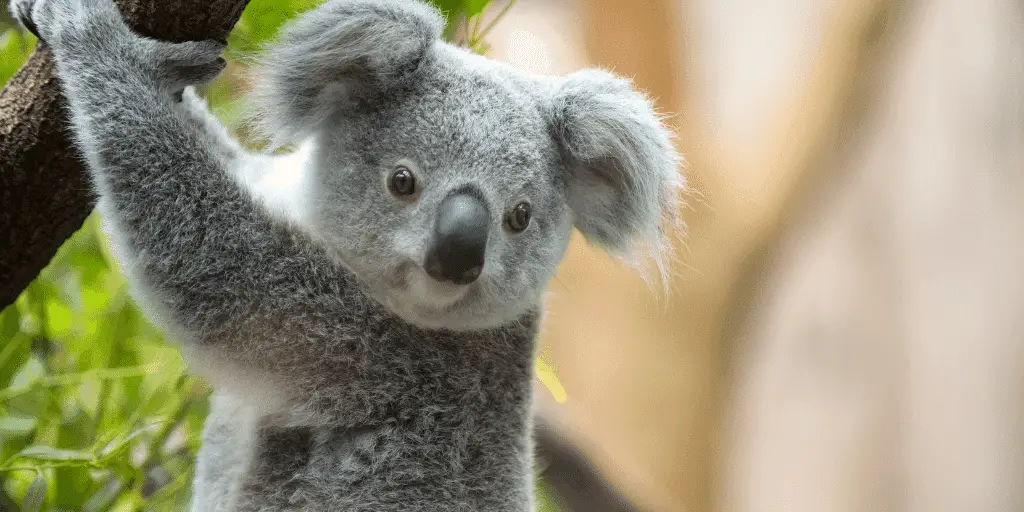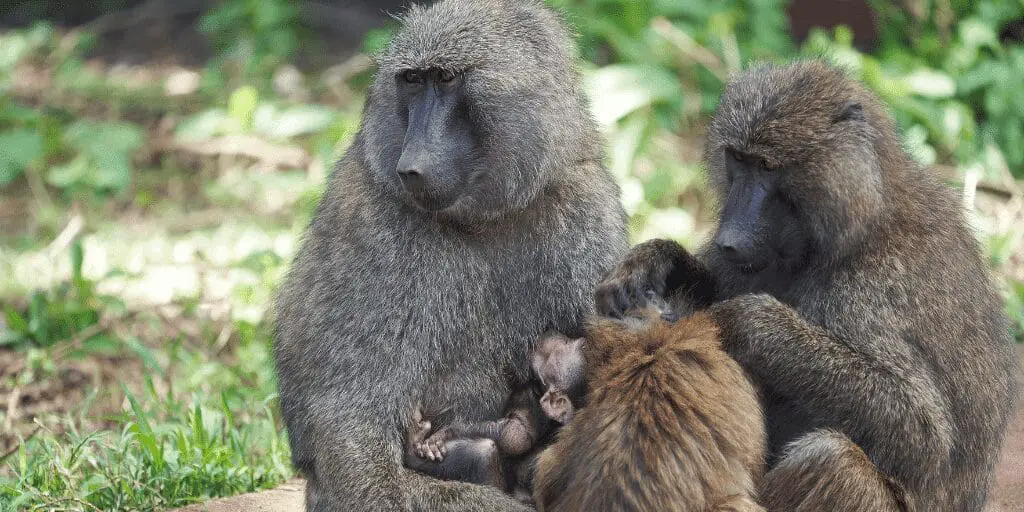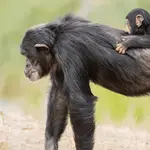Unlock the secrets of nature’s grip: discover how animals with opposable thumbs climb, forage, and survive in their unique habitats. From the tree-hugging koala to the intelligent great apes, this article explores the evolutionary marvels that enable these creatures to master their environments. Get ready to grasp the fascinating world of opposable thumbs and the extraordinary animals that use them.
Key Takeaways:
- Koalas possess two opposable thumbs on each hand, an adaptation that enhances their ability to navigate and feed in the eucalyptus forests of Australia, demonstrating a specialized evolutionary trait for arboreal living.
- Great apes, including gorillas, bonobos, orangutans, and chimpanzees, utilize their opposable thumbs for a variety of tasks such as tool use, social interaction, and intricate locomotion, reflecting their intelligence and diverse lifestyles.
- Old World Monkeys, such as baboons, grivet monkeys, and rhesus macaques, rely on their opposable thumbs for climbing, foraging, and maintaining complex social structures, showcasing the evolutionary success of this feature in both arboreal and terrestrial environments.
- Gibbons, classified as lesser apes, exhibit extraordinary brachiation skills facilitated by their opposable thumbs, allowing them to swing through trees with precision, which is integral to their locomotion, social behaviors, and mating systems.
- The Waxy Monkey Leaf Frog and chameleons represent non-mammalian examples of species with opposable or pseudo-opposable thumbs, which they use for climbing and stability in their arboreal habitats, highlighting the widespread evolutionary advantage of this trait across diverse animal groups.
List of Animals with Opposable Thumbs
Koalas, great apes, Old World monkeys, lesser apes, a frog species, chameleons, and animals with pseudo opposable thumbs like lemurs and pandas have opposable thumbs for climbing and manipulation.
| Animal Group | Description of Thumb Adaptations | Function and Evolutionary Significance |
| Koalas | Two opposable thumbs on each hand | Superior maneuverability and grip for an arboreal lifestyle; specialized for navigating and feeding on eucalyptus trees. |
| Great Apes (Gorillas, Bonobos, Orangutans, Chimpanzees) | Opposable thumbs | Dexterity for complex tasks, tool use, shelter construction, and intricate social interactions. |
| Old World Monkeys (Baboons, Grivet Monkeys, Rhesus Macaques) | Opposable thumbs | Agility for climbing, precision for foraging, and maintaining complex social structures. |
| Lesser Apes (Gibbons) | Opposable thumbs | Essential for brachiation (tree swinging), allowing efficient movement through treetops, social behaviors, and nest construction. |
| Waxy Monkey Leaf Frog | Opposable thumbs | Arboreal mastery for climbing trees, hunting insects, and unique reproductive strategies. |
| Chameleons | Zygodactylous digits (thumb-like) | Precision and stability for gripping branches in arboreal habitats and strategic advantage in hunting prey. |
| Animals with Pseudo Opposable Thumbs (Lemurs, Lorises, Giant Pandas, Opossums, Possums) | Pseudo opposable thumbs | Grasping, climbing, and handling objects in various environments; adaptation for thriving in specific ecological niches. |
1. Koalas: The Unique Arboreal Specialists

Koalas are fascinating creatures, not least because of their remarkable hand anatomy. They are one of the few mammals that boast two opposable thumbs on each hand, a feature that has piqued the interest of biologists and animal lovers alike. These additional thumbs are not just for show; they are a testament to the koala’s specialized arboreal lifestyle.
Living high in the eucalyptus forests of Australia, koalas require a strong grip to navigate the lofty branches and leaves that make up their home and diet. The opposable thumbs provide them with superior maneuverability and an exceptional grasp, allowing them to cling to bark and reach for their primary food source, eucalyptus leaves, with remarkable dexterity.
The evolutionary significance of this trait cannot be overstated. In the wild, a koala’s survival hinges on its ability to traverse the forest canopy efficiently. Their unique thumb structure is a perfect example of evolution molding a species to fit its environment seamlessly.
The koala’s habitat, which is primarily in the eastern and southeastern regions of Australia, is replete with tall eucalyptus trees. The koala’s physical characteristics, including their opposable thumbs, are exquisitely adapted to this setting, enabling them to thrive in a niche that few other species can occupy.
Koalas’ Dual Opposable Thumbs
Delving into the anatomy of koalas’ hands reveals the true functionality and benefits of their dual opposable thumbs. Unlike most other mammals, koalas have evolved this unique adaptation to enhance their arboreal abilities.
The thumbs work in concert to provide a vice-like grip on branches, giving koalas the stability and precision they need for their slow, methodical movements through the trees. This adaptation is particularly useful when they are feeding, as it allows them to hold onto branches with one hand while plucking leaves with the other.
The evolutionary reasons for this adaptation are rooted in the koala’s need to exploit a diet of eucalyptus leaves, which are tough and fibrous and grow on trees that can be quite smooth and difficult to navigate. The extra thumb enhances their ability to grasp and pull branches closer for eating, as well as to hold on securely while they snooze for up to 18-22 hours a day.
When compared to other animals with opposable thumbs, such as primates, the koala’s thumb structure stands out as particularly specialized. Primates use their opposable thumbs for a variety of tasks, but koalas have honed theirs for a life spent almost exclusively in the trees, showcasing a remarkable example of evolutionary innovation.
2. The Great Apes: Dexterity and Tool Use
The great apes are a remarkable group of primates known for their intelligence, social structures, and, notably, their opposable thumbs. These thumbs are a game-changer in the animal kingdom, providing the dexterity needed for complex tasks. Gorillas, bonobos, orangutans, and chimpanzees each have unique thumb structures that reflect their diverse lifestyles and behaviors. From tool use to shelter construction and intricate social interactions, the role of opposable thumbs in these species is a fascinating study of evolution and adaptation.
Gorillas: Ground Dwellers with Precision
Gorillas, with their imposing stature, are the largest of the primates, yet their movements are marked by a surprising level of precision, thanks in part to their opposable thumbs. These ground-dwelling giants spend a significant portion of their time foraging for food, and their thumbs are crucial for grasping and manipulating vegetation.
Gorillas also use their dexterous digits to construct sleeping nests each night, bending and weaving branches with a finesse that is essential for their comfort and safety. The structure of their thumbs allows for a strong grip, which is vital for both their dietary habits and social communication, as they often use gestures to interact with one another.
Bonobos: Social Interaction and Communication
In the peaceful societies of bonobos, opposable thumbs are central to their highly social nature. These primates are known for their expressive use of gestures, which are facilitated by their thumb dexterity.
Bonobos use a variety of tools in their daily lives, from leaf-sponges to extract water to using sticks for foraging. Their thumbs play a pivotal role in these activities, allowing them to maintain close bonds and communicate effectively within their communities.
The ability to manipulate objects and engage in complex social interactions is a testament to the evolutionary advantage provided by their opposable thumbs.
Orangutans: The Arboreal Experts
Orangutans are the reigning specialists of the treetops, and their opposable thumbs are a key feature that enables their arboreal expertise. These solitary creatures spend most of their lives high in the rainforest canopy of Borneo and Sumatra, where their thumbs help them to deftly navigate the branches.
The thumb’s grip is essential for their locomotion and for securing fruit, their primary food source. Orangutans also construct elaborate nests each night, and their thumb structure is critical for bending and weaving branches into a stable sleeping platform. The adaptability of their thumbs is a cornerstone of their survival in the dense rainforest environment.
Chimpanzees: Intelligent Tool Users
Chimpanzees are often celebrated for their intelligence and complex behaviors, which are closely linked to their opposable thumbs. These primates are adept tool users, employing sticks to extract termites from mounds, stones to crack nuts, and leaves to sip water.
Their thumbs provide the precision and versatility needed for these tasks, allowing them to manipulate their environment in ways that are rare among animals. Chimpanzees also use gestures to communicate, and their thumb flexibility is integral to these interactions.
Whether foraging, grooming, or socializing, the opposable thumbs of chimpanzees are indispensable tools that enhance their ability to thrive in diverse habitats.
3. Old World Monkeys: Grasping and Climbing Specialists

Old World Monkeys, a group that includes species such as baboons, grivet monkeys, and rhesus macaques, are fascinating examples of the evolutionary success of opposable thumbs.
These thumbs are not just an anatomical feature; they are a cornerstone of these monkeys’ survival strategies, enabling them to climb with agility, forage with precision, and maintain complex social structures.
Whether they are navigating the dense canopies of forests or the rocky outcrops of savannas, the opposable thumbs of these primates are crucial for their arboreal or terrestrial lifestyles.
Baboons: Versatile Foragers
Baboons are the quintessential survivors, adapting to a variety of habitats ranging from grasslands to forests. Their opposable thumbs play a pivotal role in their ability to grasp and manipulate a diverse menu of foods, from juicy fruits to small vertebrates.
These dexterous digits are not just for feeding; they are also essential in grooming, a social activity that cements group bonds and establishes social hierarchies. Baboons’ territorial behavior is often a display of strength and agility, where their thumbs provide a firm grip during confrontations and climbing, ensuring their dominance and survival.
Grivet Monkeys: Tree Dwellers with Precision
Grivet monkeys, with their silvery-grey fur and black faces, are a sight to behold in the treetops of their forested homes. Their opposable thumbs are a marvel of natural engineering, allowing them to deftly navigate the complex architecture of branches and leaves.
These thumbs are indispensable for picking fruits and seizing insects with pinpoint accuracy, a testament to their role in the monkeys’ diet and survival. Socially, grivets are chatterboxes, using vocalizations and body language to communicate, and their thumbs are integral in expressing affection and maintaining social bonds through grooming.
Rhesus Macaques: Adaptable and Social
Rhesus macaques are the epitome of adaptability, thriving in environments as diverse as snowy mountains and urban sprawls. Their opposable thumbs are a key factor in this adaptability, enabling them to exploit a variety of food sources and even use tools to access new ones.
These monkeys have a complex social structure, where grooming plays a significant role in forming alliances and reducing stress. The dexterity of their thumbs is also on display in their problem-solving abilities, which they use to navigate the challenges of their ever-changing habitats.
4. Lesser Apes: Masters of Brachiation
Imagine swinging through the trees with the greatest of ease, from one branch to another, in a fluid, dance-like motion. This is the world of the lesser apes, particularly the gibbons, whose lives are a dazzling aerial display thanks to their remarkable opposable thumbs.
These thumbs are not just another digit; they are pivotal to the gibbons’ arboreal lifestyle, allowing them to grip branches securely and swing, or brachiate, with a grace that would make any trapeze artist envious.
In the dense forest canopies where they reside, gibbons’ opposable thumbs are essential for their survival. They enable these creatures to move quickly to escape predators, search for food, and interact with one another.
Their thumbs play a crucial role in their social behaviors and mating systems, as well as in the more mundane, yet vital, activities like grooming and handling their young. The thumb’s versatility and strength are key to the gibbons’ ability to thrive in their treetop homes.
Gibbons: The Agile Acrobats
Gibbons are the epitome of agility in the animal kingdom, with their opposable thumbs acting as the cornerstone of their acrobatic prowess. These thumbs allow gibbons to maintain a strong grip on branches while they perform their signature brachiation.
This mode of locomotion is not just about swinging; it’s a complex, energy-efficient way to travel, requiring precise coordination and timing. The thumb’s opposable nature gives gibbons the ability to change direction swiftly and grasp branches of various sizes, making their movement through the treetops both fluid and precise.
The social structure of gibbons is fascinating, with family groups communicating through a complex system of vocalizations that echo through the forest. These calls serve to strengthen bonds, establish territory, and attract mates. The thumbs are integral here too, aiding in the manipulation of leaves and branches to amplify their calls.
In their tight-knit families, gibbons also use their hands for grooming, which reinforces social ties and is vital for their well-being. The opposable thumb, therefore, is not just a tool for movement but a key element in the rich tapestry of gibbon social life and communication.
5. Waxy Monkey Leaf Frog: The Climbing Amphibian

Imagine a frog that defies the typical image of a slimy, water-loving amphibian by spending most of its life in trees, skillfully navigating the canopy with the help of opposable thumbs. This is the reality for the Waxy Monkey Leaf Frog, a fascinating creature that showcases the incredible diversity of adaptations in the animal kingdom.
Opposable Thumbs for Arboreal Mastery
The Waxy Monkey Leaf Frog, scientifically known as Phyllomedusa sauvagii, possesses a remarkable trait that sets it apart from most amphibians: opposable thumbs.
These thumbs are not just for show; they are crucial for the frog’s survival in its arboreal habitat. The ability to grip branches securely allows the Waxy Monkey Leaf Frog to climb with confidence and agility, avoiding ground-based predators and seeking out food sources that are out of reach for non-climbing competitors.
Behavior and Diet
This species exhibits behavior that is quite un-frog-like, basking in the sun to regulate its temperature and coating itself in a waxy secretion to prevent dehydration. The Waxy Monkey Leaf Frog is primarily nocturnal, using the cover of night to hunt for insects, its main diet. The opposable thumbs come into play here as well, as they help the frog to grasp and manipulate its prey with precision.
Reproductive Strategies
When it comes to reproduction, the Waxy Monkey Leaf Frog’s opposable thumbs contribute to its unique approach. The female uses her dexterous limbs to carefully fold leaves over her eggs, creating a protective pouch that hangs above water. When the tadpoles hatch, they drop into the water below, beginning their life cycle. This strategic use of their habitat and physical adaptations ensures the next generation has a safe start to life.
The Waxy Monkey Leaf Frog is a prime example of how a simple anatomical feature, like opposable thumbs, can play a pivotal role in an animal’s adaptation and survival strategies. By mastering their treetop environment, these frogs have carved out a niche that supports their continued existence in the wild.
6. Chameleons: The Colorful Climbers
Chameleons are fascinating creatures, often celebrated for their vibrant color changes and swiveling eyes. But there’s another feature that’s equally remarkable and crucial to their survival: their specialized digits.
These digits are zygodactylous, meaning they are grouped in bundles—two facing outward and two inward, much like a pair of opposable thumbs. This unique arrangement is perfectly suited for an arboreal lifestyle, allowing chameleons to grip branches with precision and stability.
Specialized Digits for Arboreal Mastery
The thumb-like digits of chameleons are a marvel of evolution, designed to support their life among the trees. These reptiles spend most of their time off the ground, navigating a three-dimensional world where a strong grip can mean the difference between life and death.
The opposable nature of their digits enables them to grasp branches firmly, moving with confidence and agility. This grip is not just for locomotion; it’s also a strategic advantage for hunting. When a chameleon targets its prey, it relies on its stable perch to aim and project its long, sticky tongue with astonishing accuracy.
Color-Changing Abilities and Predatory Strategies
While their climbing skills are impressive, chameleons are perhaps best known for their ability to change color. This trait is often mistakenly thought to be solely for camouflage, but it also plays a role in communication and temperature regulation.
However, when it comes to hunting, their color-changing abilities can create a tactical advantage, allowing them to blend into their surroundings and ambush unsuspecting prey. Once in position, their thumb-like digits ensure they remain steady as they extend their tongue in a rapid, precise strike that few prey can evade.
The Role of Thumb-Like Digits in an Arboreal Lifestyle
Living in the trees requires more than just the ability to climb; it demands a level of mastery over one’s movements and environment. Chameleons’ thumb-like digits are central to this control.
They enable these reptiles to navigate complex foliage, maintain balance while reaching for insects, and secure themselves during rest. Without these specialized digits, the chameleon’s arboreal existence would be far more precarious, demonstrating just how integral these features are to their daily lives and survival.
7. Animals with Pseudo Opposable Thumbs

When we think of opposable thumbs, images of humans and primates adeptly manipulating objects come to mind. However, there’s a fascinating world of animals that have something quite similar, known as pseudo opposable thumbs.
These are not true opposable thumbs, as they may not have the full range of motion or anatomical positioning, but they serve a similar purpose. Animals like lemurs, lorises, giant pandas, opossums, and possums boast this trait, which plays a crucial role in their ability to grasp, climb, and handle various objects.
This adaptation is a testament to the ingenuity of evolution, allowing these creatures to thrive in their respective environments.
Lemurs, with their wide-eyed gaze, are the enchanting inhabitants of Madagascar and the Comoros Islands. Their pseudo opposable thumbs are a marvel of evolution, aiding them in deftly navigating the dense tree canopies.
These thumbs help lemurs to grip branches securely, allowing them to leap from tree to tree with ease. In their complex social structures, these thumbs are also instrumental in foraging for food and grooming group members, ensuring their survival in the diverse ecosystems they call home.
Lorises: The Nocturnal Grippers
As night falls, the lorises emerge, their pseudo opposable thumbs ready to grasp and climb through the rainforests of Sri Lanka and Southern India. These nocturnal creatures rely on their strong grip to maintain a stealthy silence as they move in search of food.
Their diet, consisting of insects and plant material, requires precision that their thumb structure readily provides. The lorises’ adaptations are perfectly suited for their moonlit forays, where a strong grip means the difference between feast and famine.
Giant Pandas: The Bamboo Specialists
Giant pandas are the gentle giants of China’s bamboo forests, and their pseudo opposable thumb, an extension of the wrist bone, is a fascinating evolutionary development.
This thumb-like structure allows them to master the art of bamboo manipulation, a skill critical to their survival given their specialized diet. As they face the challenges of conservation and habitat loss, the role of this adaptation becomes even more pronounced, highlighting the intricate relationship between anatomy and survival.
Opossums: The Versatile Climbers
Opossums are the resourceful climbers of North and South America, equipped with pseudo opposable thumbs on their hind feet. These thumbs are essential for scaling trees and foraging for food, contributing to their reputation as versatile survivors. Their nocturnal habits and adaptability to various environments showcase the importance of their thumb structure, which grants them a dexterity that many other animals lack.
Possums: The Australian Arboreal Marsupials
Possums, the charming marsupials of Australia, New Guinea, and Sulawesi, navigate their arboreal world with the help of their pseudo opposable thumbs. These thumbs are vital for gripping branches and handling food, playing a significant role in their daily activities.
Their ability to adapt to a range of habitats, from rainforests to urban areas, is in part due to this unique anatomical feature. In the complex tapestry of their social behaviors, the pseudo opposable thumb is a key thread that weaves together their survival and success.
Conclusion
In conclusion, the presence of opposable thumbs across various animal species is a remarkable testament to evolutionary adaptation. From the specialized dual thumbs of koalas, aiding their arboreal lifestyle, to the dexterity and tool use exhibited by great apes, these anatomical features have evolved to meet the unique demands of each species’ environment and behavior.
Old World monkeys utilize their opposable thumbs for climbing and social interaction, while lesser apes like gibbons demonstrate incredible brachiation skills.
Even beyond mammals, the Waxy Monkey Leaf Frog and chameleons display thumb-like adaptations that enhance their climbing abilities and predatory strategies. Additionally, animals with pseudo opposable thumbs, such as lemurs, lorises, giant pandas, opossums, and possums, showcase the diversity of this trait and its significance in various ecological niches.
This fascinating array of opposable and pseudo opposable thumbs across the animal kingdom highlights the intricate ways in which species have evolved to survive and thrive in their respective habitats.
- 12 Interesting Animals in Dominican Republic - 2024-05-02
- 8 Common Dangerous Animals in Yosemite - 2024-05-01
- 11 Interesting Animals in the Midwest - 2024-05-01









